Border Leicester Sheep
- February 8, 2024
- 0 comment
Border Leicester sheep, often referred to as Border Leicesters, are a notable breed known for their historical significance and remarkable attributes. Originating in the 18th century along the border region of England and Scotland, these sheep were initially bred for their high-quality wool, which was in great demand during the Industrial Revolution. They are characterized by their elegant appearance, featuring a white face with a pink nose and dense, lustrous wool.
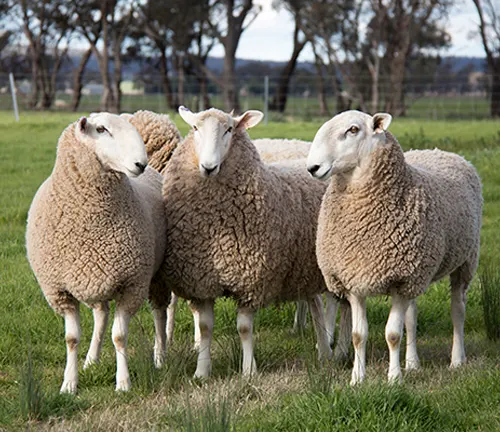
Border Leicesters are not only known for their physical characteristics but also their gentle and docile temperament, making them favored among farmers and shepherds. These sheep have multiple uses in agriculture, including wool production, meat production, and crossbreeding to enhance the qualities of other breeds. Their adaptability and versatility have made them a valuable asset in the world of farming, contributing to sustainable practices and providing high-quality resources for various industries.
| Attribute | Description |
|---|---|
| Breed Name | Border Leicester Sheep |
| Origin | Border region between England and Scotland |
| Wool Quality | High-quality, long, lustrous fibers |
| Physical Characteristics | White face, pink nose, medium to large size |
| Temperament | Gentle, docile, easy to handle |
| Uses | Wool production, meat production, crossbreeding |
| Versatility | Suitable for various farming scales and environments |
| Climate Adaptability | Thrives in diverse climates and grazing conditions |
| Sustainability | Minimal environmental impact |
| Breeding Care | Requires proper nutrition, health check-ups, and safe living conditions |
| Notable Features | Valuable wool, adaptable nature, historical significance |
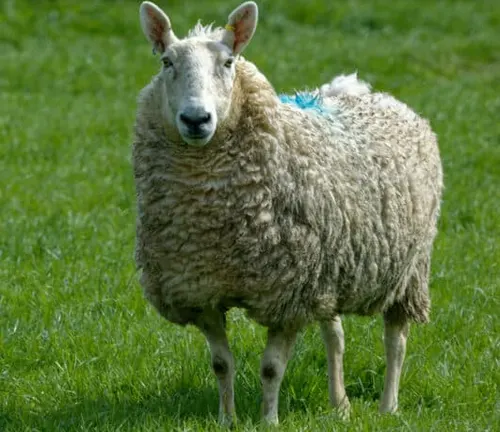
Border Leicester sheep, often simply called “Border Leicesters,” are a remarkable breed known for their versatility and adaptability. In this article, we will delve into the world of Border Leicester sheep, exploring their history, characteristics, uses, and the benefits they bring to the farming community.
History of Border Leicester Sheep
The history of Border Leicester Sheep is a fascinating journey that dates back to the 18th century in the border region between England and Scotland. These sheep are named after their place of origin, the borderlands, where they were carefully bred and developed for specific traits.
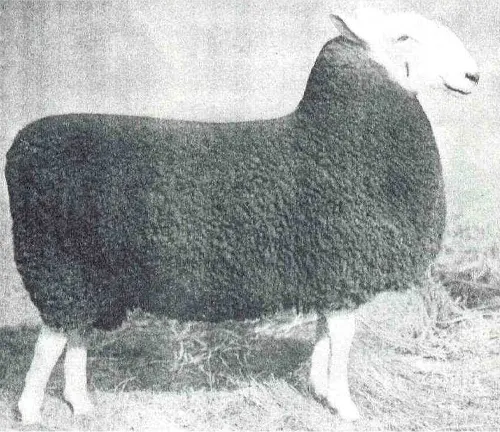
The story begins with a combination of various local sheep breeds, including the Dishley Leicester and Teeswater sheep. Breeders in the region aimed to create a sheep with exceptional wool quality and desirable meat characteristics. Their efforts led to the emergence of what we now know as the Border Leicester Sheep.
Border Leicester Sheep were primarily bred for their high-quality wool, which was in high demand during the Industrial Revolution. The textile industry required fine and lustrous wool, and the Border Leicester’s fleece proved to be an ideal choice.
Physical Characteristics
Border Leicesters are known for their distinctive appearance, characterized by their elegant and upright stance. They have a white face with a pink nose, and their wool is dense and lustrous. These sheep are medium to large-sized, with strong and well-muscled bodies, making them ideal for various purposes.
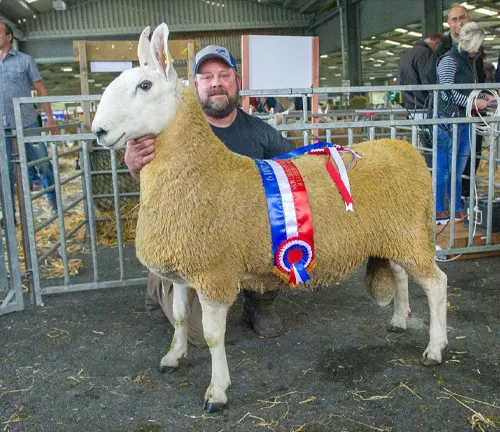
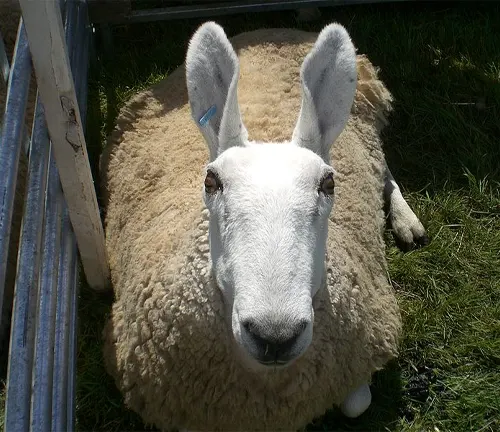

- Face and Nose
Border Leicesters have a striking white face with a distinctive pink nose. This unique facial coloring sets them apart from many other sheep breeds. - Size
These sheep are medium to large-sized animals, with a well-proportioned and robust build. They have strong legs and a well-muscled body, which makes them suitable for various agricultural purposes. - Wool
Border Leicester Sheep are renowned for their dense and lustrous wool. Their fleece is highly prized for its quality, with long, fine, and silky fibers. The wool is particularly valuable in the textile industry due to its softness and versatility. - Ears
They typically have medium-sized, alert ears that stand upright. These ears contribute to their overall elegant appearance. - Legs and Hooves
Border Leicesters have sturdy and well-formed legs with clean hooves. Proper hoof care is essential to ensure their comfort and mobility. - Tail
Their tail is usually long and slender, extending down to their hocks. It is covered with the same high-quality wool as the rest of the body. - Body Color
Aside from their white faces, Border Leicester Sheep usually have a white body, though there may be some variations in the coloring of their wool. - Adaptability
While not a physical characteristic, their adaptability to various climates and grazing conditions is worth noting. They can thrive in different environments, making them a versatile choice for farmers. - Temperament
Again, not a physical feature, but their gentle and docile temperament is an essential characteristic. This calm nature makes them easy to handle and work with.
Temperament and Behavior
Border Leicester sheep are known for their gentle and docile temperament. They are easy to handle and work with, making them a preferred choice for farmers and shepherds. Their calm nature makes them suitable for both experienced and novice livestock handlers.
Easy Handling
Border Leicester Sheep are known for their ease of handling, which is particularly beneficial during activities such as shearing, vaccinations, and general care. Their calm demeanor reduces stress for both the sheep and the handlers.
Grazing Behavior
They are efficient grazers and have a natural inclination for foraging. This behavior contributes to their adaptability to various grazing conditions and helps maintain healthy pastures.
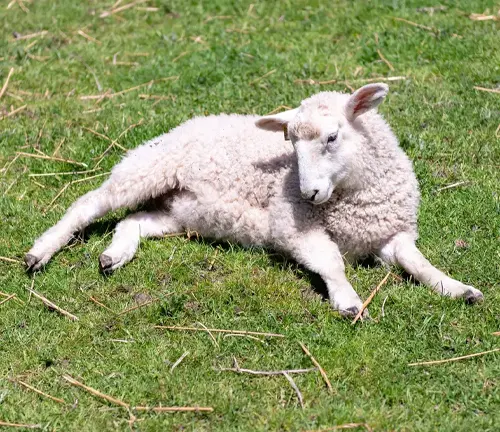
Vocalization
While generally quiet, Border Leicester Sheep may communicate through soft bleats, especially when they are in distress or seeking attention. Their vocalizations are not as frequent or loud as some other breeds.
Flocking Instinct
These sheep have a strong flocking instinct, preferring to stay together in groups. This behavior enhances their safety and security in their natural habitat.
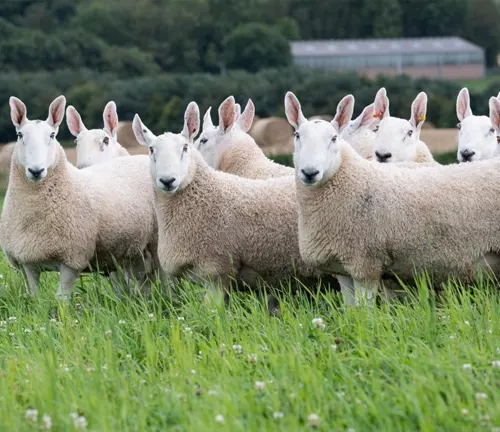
Minimal Agitation
Border Leicesters tend to remain calm in various situations, which reduces the risk of agitated behavior that could lead to injuries or disturbances within the flock.
Uses in Agriculture
Wool Production
One of the most well-known uses of Border Leicester Sheep is for wool production. They are prized for their high-quality wool, which features long, silky, and lustrous fibers. This wool is highly sought after by the textile industry for crafting fine textiles and garments.
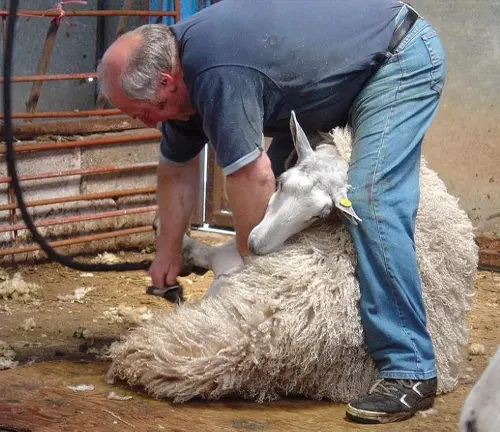
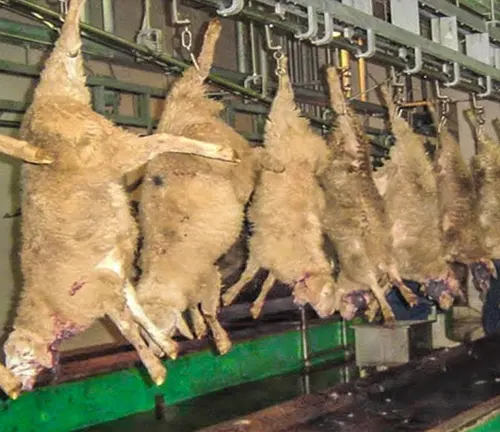
Meat Production
Border Leicester Sheep are also raised for their meat. Their lean and flavorful meat is popular among consumers and chefs alike. The breed’s adaptability to various climates and grazing conditions contributes to their success in meat production.
Crossbreeding
Border Leicester Sheep are often used in crossbreeding programs. They are crossed with other sheep breeds to improve wool and meat quality in the offspring. This practice creates hybrid breeds that excel in multiple aspects, providing both wool and meat benefits.
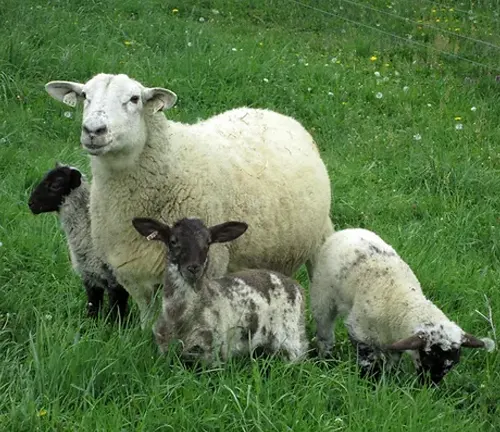
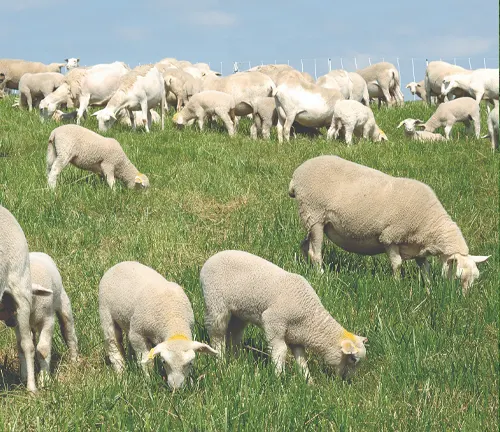
Grazing and Pasture Management
Border Leicesters are efficient grazers and help manage pastures effectively. Their grazing behavior contributes to maintaining healthy grazing lands by controlling weeds and promoting new growth in the grass.
Biodiversity Preservation
Some conservation programs utilize Border Leicester Sheep to help maintain genetic diversity within sheep populations. This is particularly important for preserving heritage and rare breeds.
Land Conservation
Due to their adaptability to various landscapes, Border Leicester Sheep are employed in land conservation efforts. They help prevent overgrowth of vegetation, reducing the risk of wildfires in certain regions.

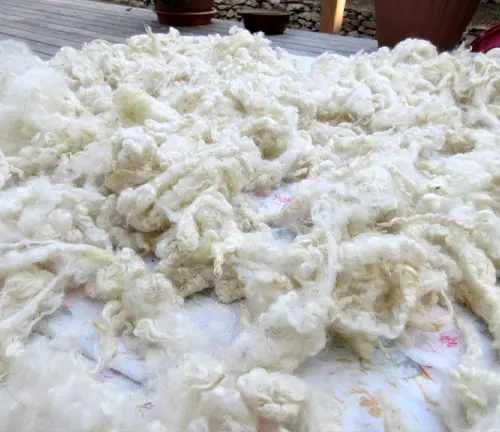
Wool Fiber Arts
Beyond commercial wool production, Border Leicester wool is favored by artisans and hobbyists in the world of fiber arts. Spinners, knitters, weavers, and felters appreciate the quality of their wool for crafting unique and handmade products.
Educational Purposes
Border Leicester Sheep are sometimes kept on educational farms or as part of agricultural programs at schools and universities. They provide valuable hands-on learning experiences for students studying animal science and agriculture.
Sustainable Farming
Their ability to graze efficiently and thrive in various conditions contributes to sustainable farming practices. They help maintain balanced ecosystems while providing valuable resources.
Breeding and Care
Breeding and care of Border Leicester Sheep require attention to several important factors to ensure their health, well-being, and productivity. Here’s a guide to breeding and caring for these versatile sheep:
Breeding
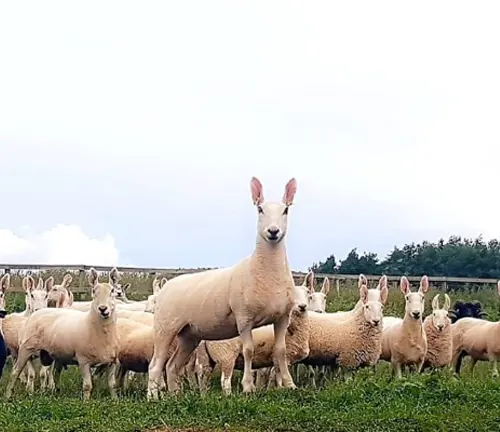
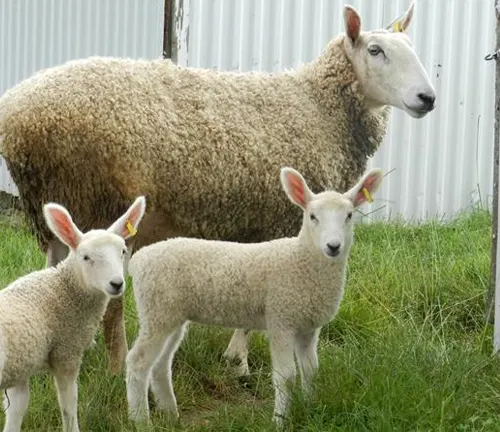
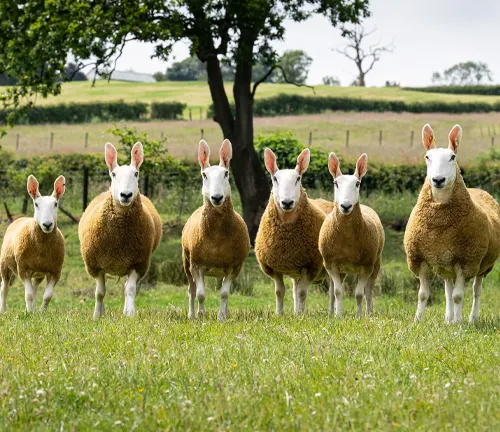
- Selection of Breeding Stock: Start by selecting healthy and genetically desirable breeding animals. Look for those with good conformation, quality wool, and a history of producing healthy offspring.
- Breeding Season: Border Leicester Sheep typically have a seasonal breeding cycle, with ewes coming into estrus during the fall. Plan your breeding program to align with this natural cycle.
- Ram Selection: Choose a high-quality ram that complements the qualities you want to improve in your flock. Ensure the ram is free from any genetic defects or health issues.
- Estrus Synchronization (optional): Some breeders may use estrus synchronization techniques to time the breeding more precisely. Consult with a veterinarian or livestock specialist for guidance if using this approach.
- Mating: Introduce the ram to the ewes, ensuring proper supervision to prevent injuries. Allow mating to occur naturally, as Border Leicester Sheep usually do well in this regard.
- Gestation Period: The gestation period for Border Leicester Sheep is approximately 145 to 150 days. Provide proper nutrition and care to pregnant ewes during this period.
Care
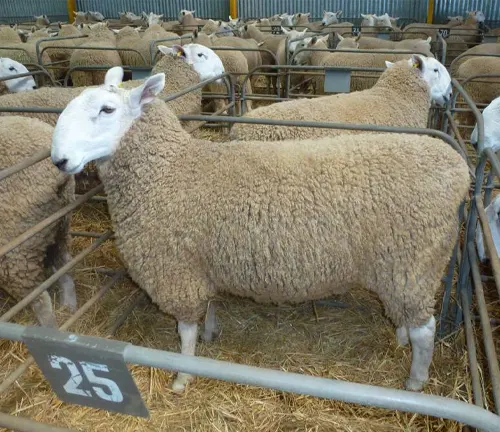


- Nutrition: Ensure that your Border Leicester Sheep receive a balanced and nutritious diet. Provide access to clean water, high-quality forage, and supplementary feed if necessary. Pregnant and lactating ewes may have increased nutritional requirements.
- Shelter: Provide shelter from harsh weather conditions, especially during the lambing season. Adequate shelter helps protect the ewes and lambs from cold, wind, and rain.
- Healthcare: Establish a regular healthcare routine that includes vaccinations, deworming, and routine health checks. Consult with a veterinarian for a comprehensive health program tailored to your flock’s specific needs.
- Lambing Management: During lambing season, monitor ewes closely for signs of labor. Provide a clean and safe environment for lambing, and be prepared to assist with difficult births if necessary.
- Lamb Care: Ensure that newborn lambs receive colostrum within the first few hours of life to boost their immune system. Keep a close eye on lambs’ health and well-being, addressing any issues promptly.
- Pasture Management: Implement a rotational grazing system to prevent overgrazing and maintain healthy pastures. Border Leicester Sheep are efficient grazers but require access to fresh forage.
- Shearing: Shear Border Leicester Sheep annually to harvest their high-quality wool. It’s advisable to hire a professional shearer experienced with the breed.
- Record Keeping: Maintain accurate records of breeding, lambing, vaccinations, and health checks. This information is essential for managing the flock effectively.
- Socialization: Border Leicester Sheep are social animals and thrive in a flock. Ensure that they have companionship, as isolation can cause stress.
Breed Classification
Border Leicester sheep are a specific breed rather than a group of different species. They belong to a single breed, which is known as the Border Leicester.
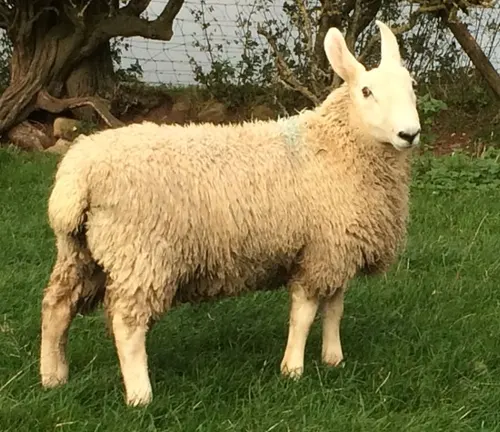
Frequently Asked Questions (FAQs)
1. What are Border Leicester Sheep known for?
Border Leicester Sheep are known for their high-quality wool, versatile nature, and adaptability to different farming conditions.
2. How did the Border Leicester Sheep breed originate?
The breed originated in the 18th century in the border region between England and Scotland, primarily bred for their exceptional wool quality.
3. What are the physical characteristics of Border Leicester Sheep?
They typically have a white face with a pink nose, are medium to large-sized, and have dense and lustrous wool.
4. What is the temperament of Border Leicester Sheep?
Border Leicesters are known for their gentle and docile temperament, making them easy to handle and work with.
5. What are the main uses of Border Leicester Sheep in agriculture?
They are primarily used for wool production and meat production. They are also valuable in crossbreeding programs to improve other sheep breeds.
6. Why is Border Leicester wool highly regarded?
Border Leicester wool is prized for its softness, fineness, length, and luster, making it highly desirable in the textile industry.
7. Can Border Leicester Sheep adapt to different climates?
Yes, they are known for their adaptability and can thrive in various environmental conditions, including challenging climates.
8. How should one care for Border Leicester Sheep?
Proper care includes providing nutrition, regular health check-ups, and ensuring a safe and comfortable living environment.
9. Are Border Leicester Sheep suitable for small-scale farming?
Yes, they are versatile and can be raised on both small and large farms.
10. What is the historical significance of Border Leicester Sheep?
These sheep played a crucial role in the textile industry during the Industrial Revolution due to their high-quality wool.




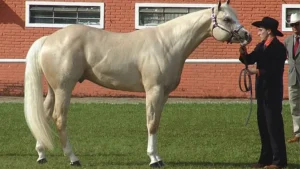
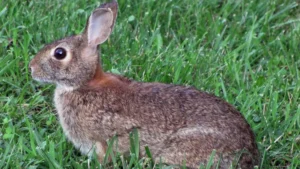

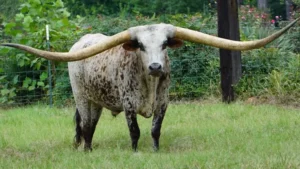



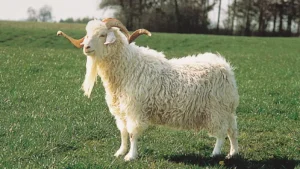


Leave your comment